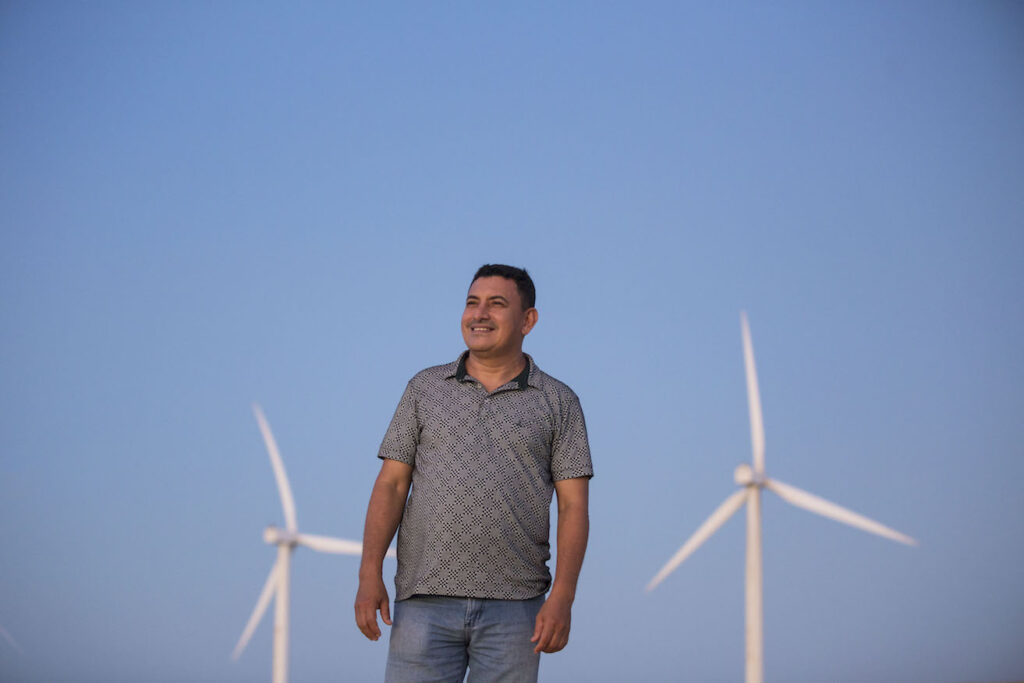Interviews
Roberto Cariri (Flora Cariri): The Honey from the Caatinga
16:51 19 de November de 2022 Por Daniel Oiticica

Roberto Cariri, Secretary of Tourism and Economic Development of Amontada and owner of Apicultura Flora Cariri.
The honey industry in Ceará sees a scenario of growth in the coming years. New export destinations, the possibility of selling it abroad already bottled, the professionalization of the production chain and the rainy weather in 2021 and 2022 are the main reasons for this optimism. The beekeeper Roberto Cariri, owner of Apicultura Flora Cariri, and Secretary of Tourism and Economic Development of Amontada, takes stock of the reality of the honey industry in Ceará and reveals its great differential.
As a beekeeper, you have a great trajectory in the honey industry…
We were involving the producers, taking care of the production, and then came the exporters, the warehouses, and the big corporations. Today the production chain is better organized. We started with the basic courses of beekeeping, of cooperative management, to understand what cooperating is to grow, to understand the life of the bees, the best reference in living together for the collective well-being is the social organization of the bees. In this scenario, I visited some business areas in Argentina, in the United States, in Mexico, in France, to understand how they made their productive interrelationship. And we started to turn this design into a productive chain. Today, all the honey producers receive a federal inspection, all the equipment have federal standards that meet the health surveillance, with stainless steel, proper flooring, the work sink, the external area, and all the other standards. And with this, the warehouses started to realize that everything was inside a different chain, that of the organic honey from the caatinga of Ceará. And with the arrival of the warehouses, the small producer processes the honey in his house, in his community, with government support, from credit entities like the World Bank. The rural worker understands today that he cannot impact the caatinga biome, because the source of the honey comes from there. The United States today import 70% of our honey in bulk. I expect that by 2024 we will start to bottle this organic honey in Portugal instead of exporting it in bulk. We already have a label approved by the European Community and are negotiating a joint venture with a bottler.
What are the differentials of Ceará honey?
The differential of Ceará honey is exactly the flora of the caatinga. The caatinga is a northeastern biome of great relevance in Ceará. Almost all of Ceará, apart from some coastlines, is caatinga. In the caatinga, we find the marmeleiro, the velame, the bamburral, the jetirana, the mofumbo, the jiquiri, the jurema, and all these plants are suitable for the production of honey. And the honey from these flowers is organic honey, that is, there are no pesticides in this honey, so today it is a highly competitive product that adds great value to the foreign market. Today, beekeeping in Ceará is extremely rational and everything has traceability. More than 90% of apiaries are georeferenced, that is, they have a defined origin. Morada Nova is the city with the most honey producers in Brazil. Nearly 500 families keep bees there, in more than 20,000 hives. Today we have honey warehouses qualified for export in Limoeiro, Beberibe, Cariri, Pecém and Pacajus.
And what is your real export potential?
The exports are directly linked to the winters. So, when the impact of drought happens, i.e., if the caatinga, the biome doesn’t flower, automatically the bees don’t reproduce. If the bees don’t reproduce, automatically there is no honey. So, what occurs is exactly a balance of a plan to have a scale of insect production that the rural producer can balance. Imagine the milk producer who lost his milk cows. What happens the following year, and the year after? The government runs supply programs and takes new herds. So, I believe that in the future we will have a supply bank of insects, of bees, so that the producers who lost their hives are not left without the assets to produce. The beekeeping herd is the hives. Compared to other livestock activities, beekeeping is one of the activities that has a faster recovery rate, because at each 100 millimeter rain cycle the blooms return. So, recovery is fast, and consequently the exports are also fast. With the good rains in 2021 and 2022, we will have a recovery. We are going to grow strongly in beekeeping again and reestablish it as a rational and professional activity. Beekeeping used to be very empirical. Only more recently have universities started the first specialization courses in professional beekeeping and meliponiculture (stingless beekeeping). It is a new activity, in terms of technologies, advances, nutrition, management, and genetics. I believe that the future is approaching with this focus because bees are the engine of agriculture and fruit farming. No engine, no transport.
